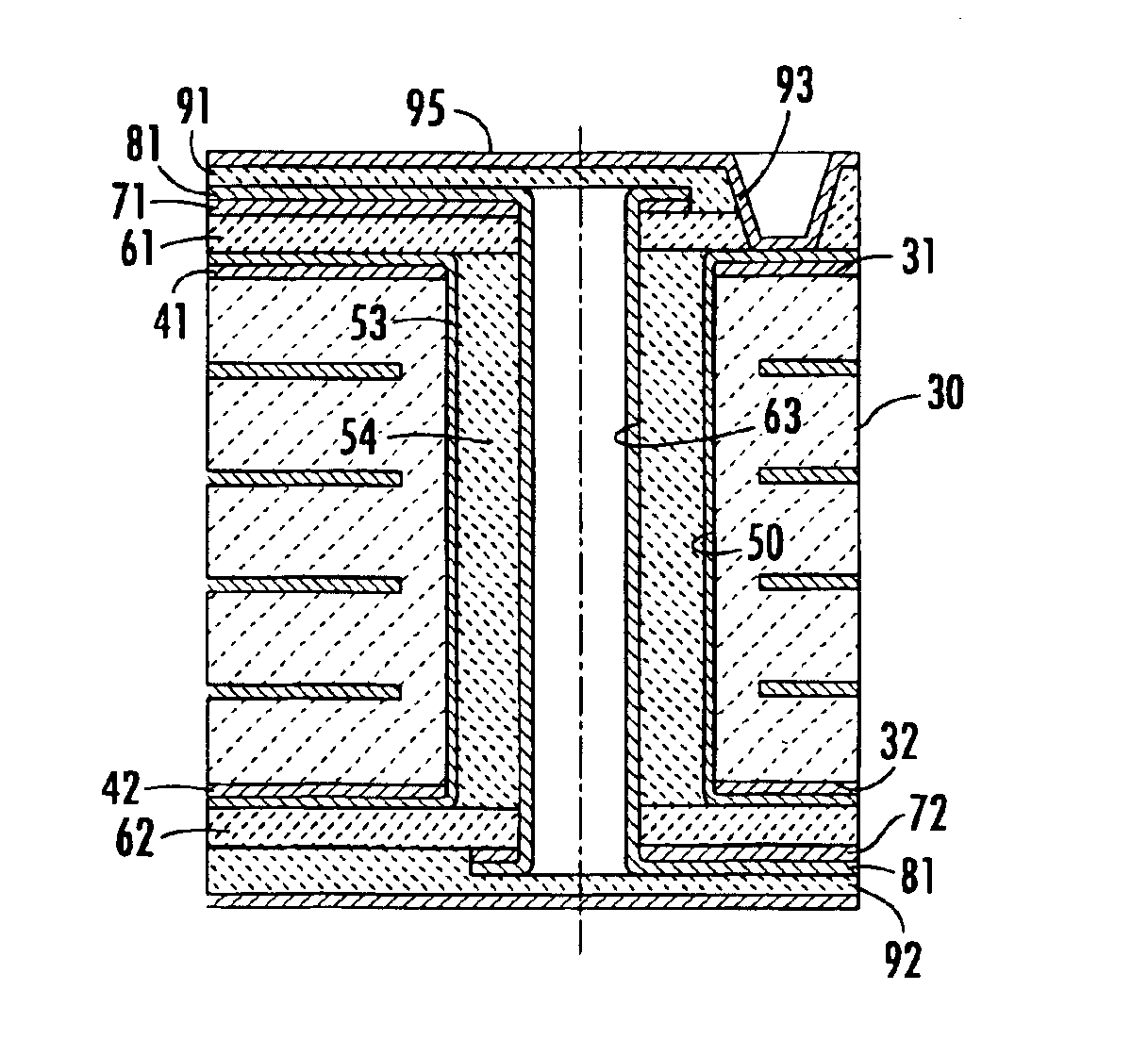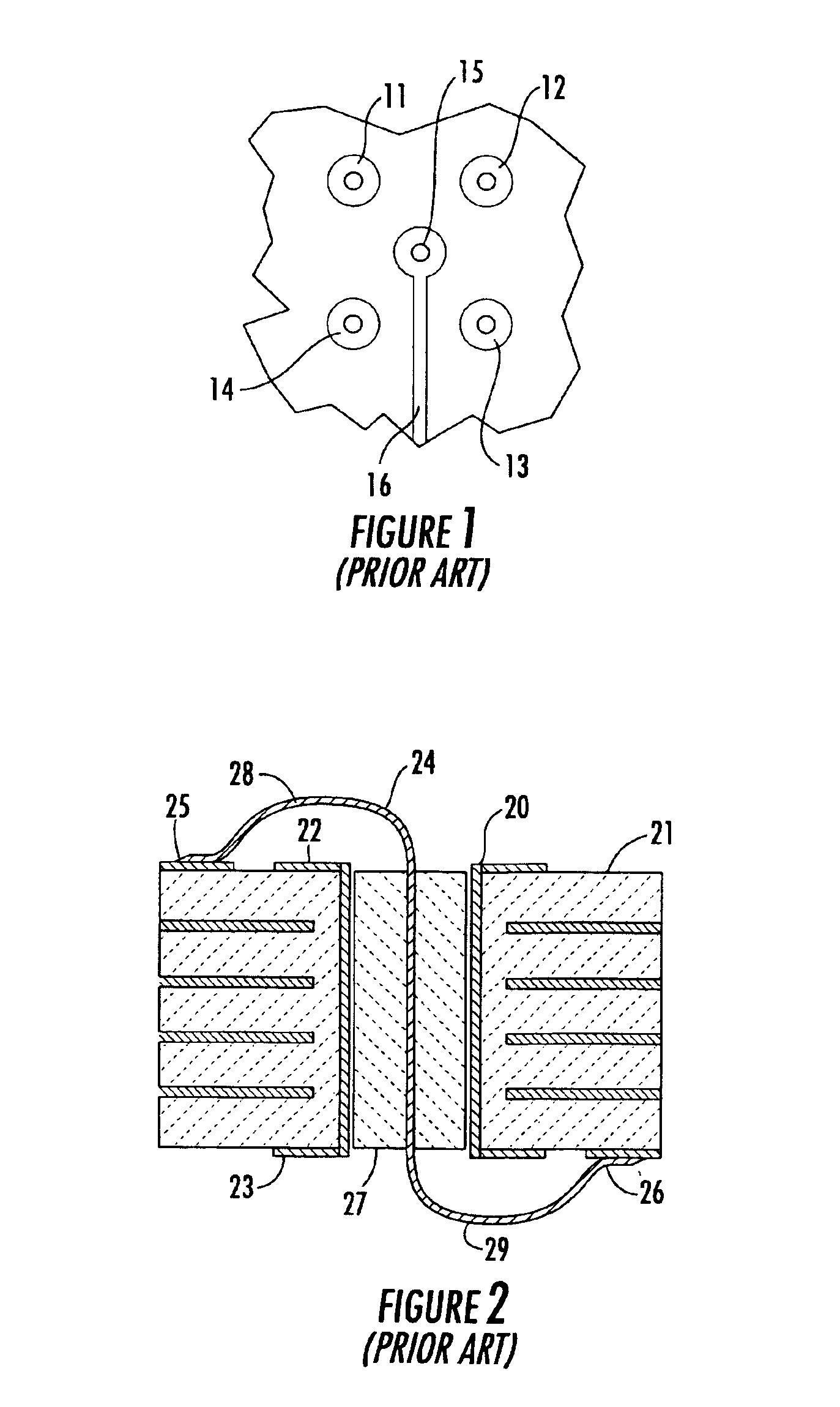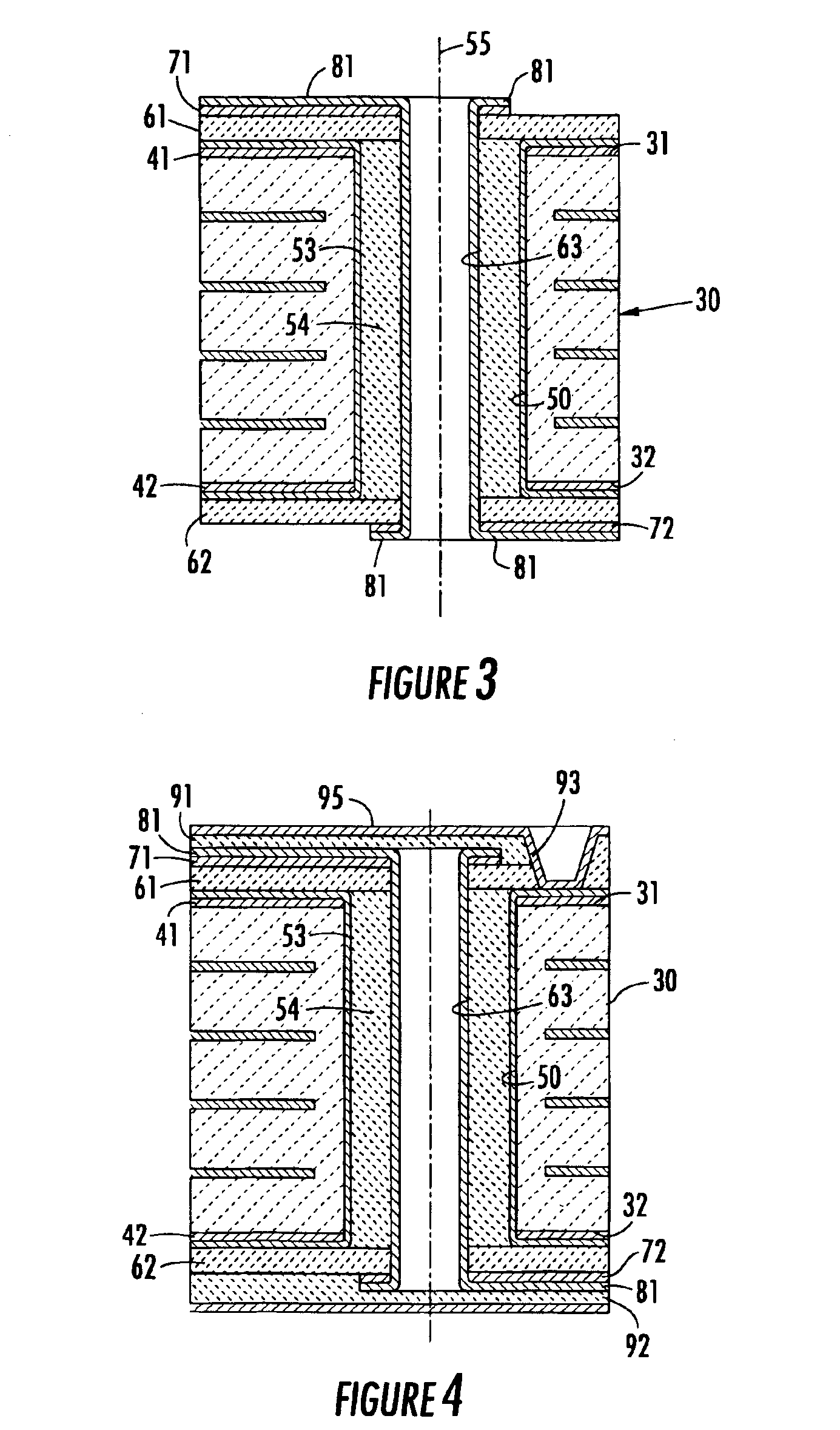Conductor-within-a-via microwave launch
a conductor and a technology of a via, applied in the field of communication systems, can solve the problems of rf pass-through loss, leakage to one or more internal layers of printed circuit conductor traces, and degrade the voltage standing wave ratio (vswr)
- Summary
- Abstract
- Description
- Claims
- Application Information
AI Technical Summary
Benefits of technology
Problems solved by technology
Method used
Image
Examples
Embodiment Construction
[0015]A first microstrip-coupling embodiment of the improved conductor within a via, shielded microwave interconnect structure in accordance with the present invention is diagrammatically illustrated in FIG. 3 as comprising a substrate 30 having first and second, generally parallel, opposite planar surfaces 31 and 32, and containing a laminate structure of multiple printed circuit layers therein. A first ground plane layer 41 is formed on the first planar surface 31, while a second ground plane layer 42 is formed on the second surface 32. A first, outer via or aperture 50 (which may be formed as a drilled cylindrical through hole) extends through the substrate 30 along an axis 55, so that it intersects the ground plane layers 41 and 42 on the respective opposite surfaces 31 and 32.
[0016]A conductive material is formed on the first and second ground plane layers 41 and 42, respectively, and also on the (generally cylindrical) sidewall of the aperture 50. In addition to thickening the...
PUM
 Login to View More
Login to View More Abstract
Description
Claims
Application Information
 Login to View More
Login to View More - R&D
- Intellectual Property
- Life Sciences
- Materials
- Tech Scout
- Unparalleled Data Quality
- Higher Quality Content
- 60% Fewer Hallucinations
Browse by: Latest US Patents, China's latest patents, Technical Efficacy Thesaurus, Application Domain, Technology Topic, Popular Technical Reports.
© 2025 PatSnap. All rights reserved.Legal|Privacy policy|Modern Slavery Act Transparency Statement|Sitemap|About US| Contact US: help@patsnap.com



